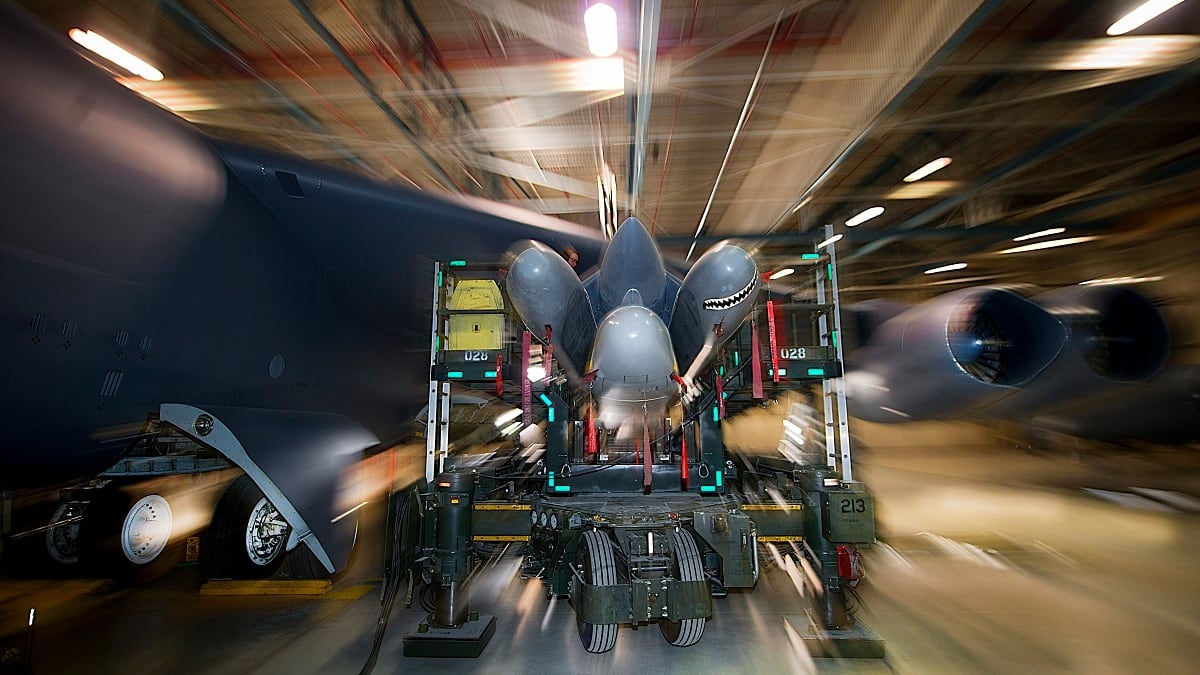WASHINGTON — In a surprise move, the Air Force on Friday announced plans to continue its Long Range Standoff Weapon program with Raytheon as the prime contractor.
The LRSO program, which aims to field a new air-launched cruise missile capable of both nuclear and conventional strikes, is currently in its technology maturation and risk reduction phase, with both Raytheon and Lockheed Martin developing their own versions of the weapon.
Typically, the Air Force would downselect to a single company in fiscal year 2022, when it awarded the engineering and manufacturing development contract that precedes low-rate production.
RELATED

However, the Air Force decided to press ahead with Raytheon’s design after an “extensive evaluation” of the company’s technology as presented during the preliminary design review, said Maj. Gen. Shaun Morris, who leads the Air Force Nuclear Weapons Center.
“Our competitive TMRR phase, which included both Lockheed Martin and Raytheon as the prime contractors, enabled us to select a high-confidence design at this point in the acquisition process,” he said, according to an Air Force release.
“And this early off-ramp of a contractor is completely in line with the existing LRSO acquisition strategy, which included periodic reviews to assess contractor designs,” Morris said. “Lockheed Martin has been an excellent contractor and partner throughout the TMRR effort and this pivot to Raytheon does not represent a lack of effort or commitment on their part. Lockheed Martin has supported the nuclear enterprise for decades and we continue to value their expertise in sensors and nuclear certification and surety.”
Elizabeth Thorn, the service’s program manager, characterized the decision as “not a downselect, per se,” adding that the Air Force will continue to work with Lockheed on specific technologies that could drive down risk to the LRSO design or otherwise be beneficial to the program.
The Air Force noted that the company had begun the “closeout process” to stop work on risk reduction phase of the program, leaving Lockheed’s precise role in the LRSO program unclear.
“We’ve supported our nation’s nuclear triad for more than 60 years and look forward to working with the USAF to support the LRSO mission, specifically leveraging our sensor technology and nuclear certification and surety expertise,” Lockheed said in a statement.
LRSO is set to replace the AGM-86B Air Launched Cruise Missile or ALCM, but the program has come under intermittent fire from lawmakers who believe that arming aircraft with a weapon that could be either nuclear or conventional could unnecessarily raise the risk of miscalculation, triggering a nuclear war.
The Air Force has argued that it needs a nuclear missile that can be fired from standoff distances to enable the non-stealthy B-52 to remain a credible deterrent to adversaries with advanced air defense systems.
Due to the decision to select Raytheon early, the Air Force wants to shift funding that will allow the company to begin certain work early, such as flight tests, the service said. A contract award for the next phase of the program is still scheduled for fiscal year 2022.
Morris added that the service was also confident in its ability to keep the program affordable in a sole-source environment, despite the lack of competition that usually helps the government negotiate a lower-cost product.
Roman Schweizer, a defense analyst with Cowen Washington Research Group, said the Air Force’s announcement prompts additional questions about Lockheed’s future role and the information both companies presented during the preliminary design view.
“It’s possible the USAF made an industrial base/cost decision based on other long-range weapons,” he wrote in an email to investors. “Singling up on LRSO could have been an industrial base decision or a way to reduce cost and speed up development.”
In a statement, Raytheon noted that the company is on track to complete risk reduction efforts by January 2022.
“LRSO will be a critical contributor to the air-launched portion of America’s nuclear triad,” said Wes Kremer, president of Raytheon Missiles and Defense.
Valerie Insinna is Defense News' air warfare reporter. She previously worked the Navy/congressional beats for Defense Daily, which followed almost three years as a staff writer for National Defense Magazine. Prior to that, she worked as an editorial assistant for the Tokyo Shimbun’s Washington bureau.








